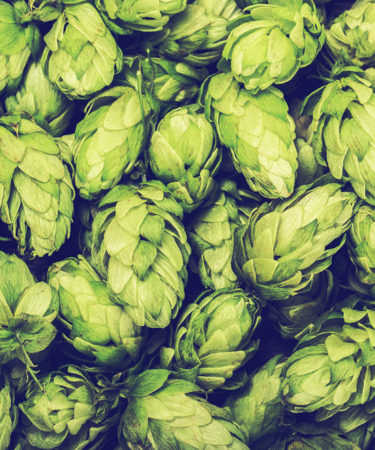Imagine: You finally crack open that IPA you’ve been saving for a special occasion (one of these 10, perhaps?). Your family, friends, and that overzealous guy at the beer store have been crowing about how it essentially tastes like the second coming. But when you open it, the flavors everyone was so excited about seem muted or nonexistent.
There are two possible culprits here. Either your taste buds are toasted or your IPA isn’t fresh, and unless you’ve been eating Hot Pockets with absolute abandon, it’s probably the latter.
In short, you have three weeks from the date of production for all the flavors to shine through. The short answer doesn’t tell the whole story, though, especially when you consider that, in many cases, an IPA retains flavor for up to three months. Beer doesn’t expire in the same way as milk, but the flavors can diminish — and that is especially true for IPAs.
Don't Miss A Drop
Get the latest in beer, wine, and cocktail culture sent straight to your inbox.IPAs are more sensitive than other beers because of an abundance of what makes an IPA taste like an IPA: hops. Hops add bitterness, flavor and aroma to beer. Most beer styles cast hops in a supporting role, but modern, hop-forward IPAs put hops front and center. And when the hops brewed into an IPA are exposed over time to ultraviolet light, heat and oxygen (the “four main enemies,” as HenHouse Brewing Company co-founder Collin McDonnell puts it in “Serious Eats”), they begin to lose their flavor-enhancing power.
Breweries are well aware of this fact. An extreme example of a company that takes care of its time-sensitive IPA is Stone Brewing’s Enjoy By IPA, which, as the company puts right on their website, is “brewed specifically not to last.” Other companies keep their dates secret with tough-to-crack packaging codes.
Packing codes increase the likelihood of getting an IPA with less than the intended flavor. Over time, “the hop profile will mellow out, turning IPAs malty or caramel-flavored,” Resurgence Brewing writes on its blog. “Hops degrade over time, so the hoppier the beer, the less agreeable it is. If you’re picking up an IPA, for example, drink it ASAP to get the best hop quality and the highest flavor integrity.”
Yet, whether it’s fresh or not, old beer is inevitably put on the shelves and sold. Store owners simply don’t want customers to avoid the product on their shelves because it’s one day past the “best buy” or “enjoy by” date. There are few ways to decipher packaging codes (in fact, there’s a whole website designed to teaching people how to read them called BeerDates.com) but it’s more than likely you won’t remember all the obscure methods used to obscure the truth. So how do you pick out the freshest IPA available in your area?
First, consider where you buy beer. If it’s a store devoted primarily to beer that pushes out bottles at Usain Bolt-level speed, then the beer on the shelf probably came in a more recent shipment. That means avoid the big box stores and places that put the ping pong balls next to the beer fridge. Second, pick a beer that has stayed cold throughout its time on Earth. Cold temperatures slow degradation. Third, know if your beer is dry hop or wet hop. Wet hop beers use fresh hops picked in August or September and have a less concentrated, but arguably fresher, taste than their dried-out counterparts. The flavor of wet IPAs depends on being consumed young even more than regular IPAs.
There you have it: The faster you can get an IPA from the brewery to your taste buds, the better. Avoid buying IPA older than three months, and pick beer in a beer fridge over beer on a shelf. If you really love your IPA and want it as bitter-fresh as possible, you may be a psychopath, but buy and drink it before it hits three weeks old.
